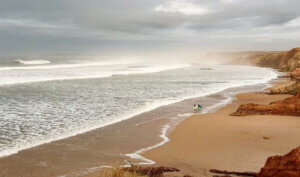We all start as beginners, dreaming of mastering the art of surfing. When you look at other surfers catching waves and having fun, it can feel like a long way before you can call yourself a surfer. If you want to reach that level faster and more effectively, take a look at these crucial tips for becoming an intermediate surfer.
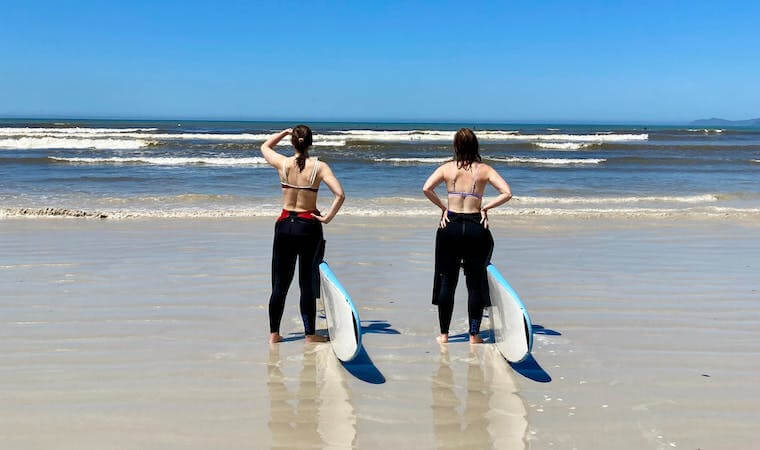
- 1 Common mistakes
- 2 1. Be brave
- 3 2. Read the ocean
- 4 3. Keep on adjusting your position
- 5 4. Surf skate
- 6 5. Learn how to study the forecast
- 7 6. Pick a goal for each session
- 8 7. Master the duck dive
- 9 8. Improve your paddling
- 10 9. Spend time observing other surfers
- 11 10. Focus on being in the pocket
- 12 11. Bend your knees
- 13 12. Find a surfer friend who is at the same level as you
- 14 13. Travel to surf
- 15 14. Move somewhere where there is surf
- 16 15. Have the correct positioning when you are on your board
- 17 Finale thoughts on surfing tips for becoming an intermediate surfer
Common mistakes
I have seen surfers at all stages of their journey towards mastering surfing. Most people make a couple of mistakes that greatly hold them back.
If you manage to follow my advice, you will be able to progress much faster.
Surfing is tricky
That said, surfing looks easy when you see someone used to the sport. But it’s all an illusion. It takes years and 100 hours spent in the water to achieve that carefree catching and gliding on the waves.
When you learn surfing as an adult, you will have to put in a huge effort to make it look effortless.
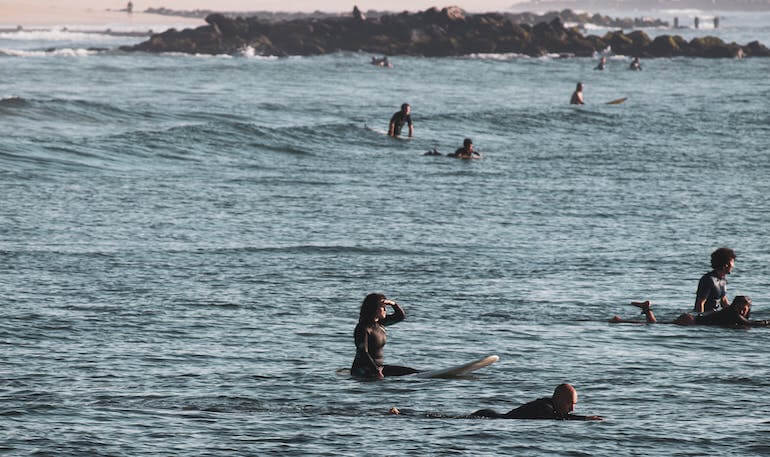
1. Be brave
Have you not been catching anything for the last 20 minutes?
You might even be sitting in the wrong place because you feel safer where you are.
Many people who surf with me and my brother just end up sitting a bit away from the impact zone. They are probably a bit afraid and unsure about what they should be doing.
They have my sympathy since the Atlantic Ocean is incredibly powerful. Good surf spots are often crowded with amazing surfers, especially in Portugal.
But you came here to surf, and to achieve that goal, you have to push yourself. You simply have to paddle for more waves.
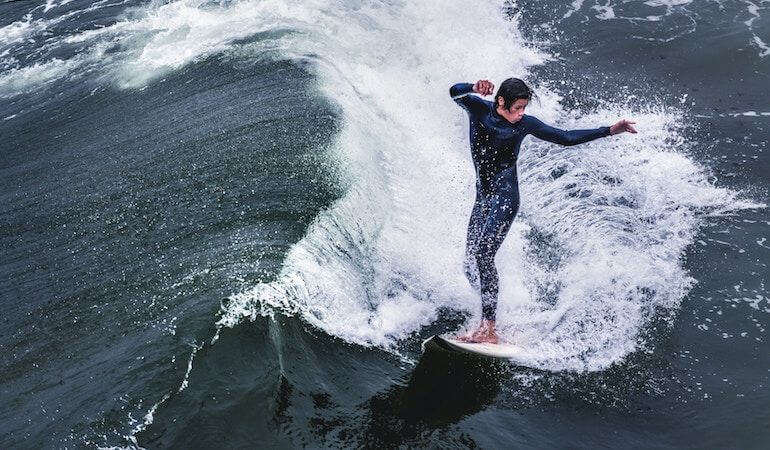
How to develop fast
Everyone I’ve seen who has gotten the hang of surfing quickly has tried to catch many waves. They wait a maximum of five minutes before it’s time to try to catch the next one.
This is my number one tips for quickly becoming an intermediate surfer. Make sure you push yourself to try and catch enough waves.
Count how many waves you try to take during a session and make that number 20 or more. When I first learned to surf, I simply didn’t go up until I had managed to stand up ten times.
Trying to catch a wave and wipe out is much better than sitting on the sidelines.
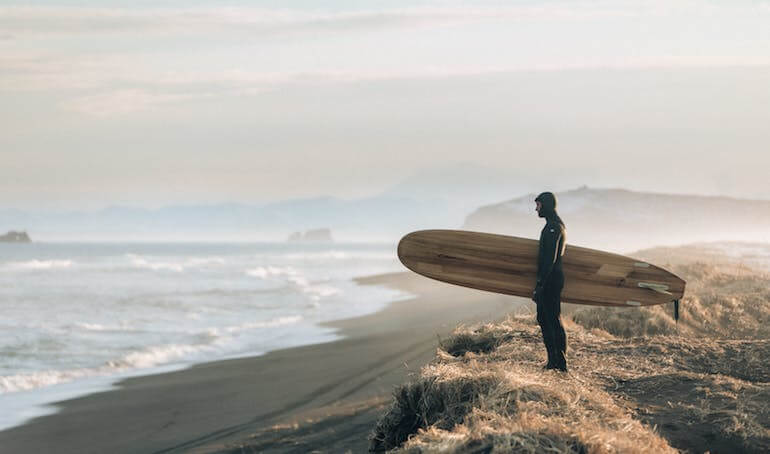
2. Read the ocean
Before you enter the water, take 10 minutes just to watch. When I enter the water, I usually have a plan. I know where I want to sit. I clearly envision how I will outsmart all the other surfers at the break.
Any good surfer will analyze the break before going in. Observe where the peak is. Watch out for potential current. Are all the surfers drifting away from the peak?
Decide if you should sit further out than the other surfers, or if you should take an inside position. Maybe they all sit and wait for waves that never come?
Is the swell rising or shrinking?
Pay close attention to where the other surfers paddle out. Many breaks have a channel.
Who is surfing the break?
Also, judge the level of the surfers. Is the break full of beginners or advanced surfers? This will tell you something about the conditions.
If it is the first time at a new break, ask the locals what you should think about before paddling out.
Out of the water, most surfers are friendly and approachable.
A successful surf session starts with an analysis of the condition. These tips will help you progress to becoming an intermediate surfer.
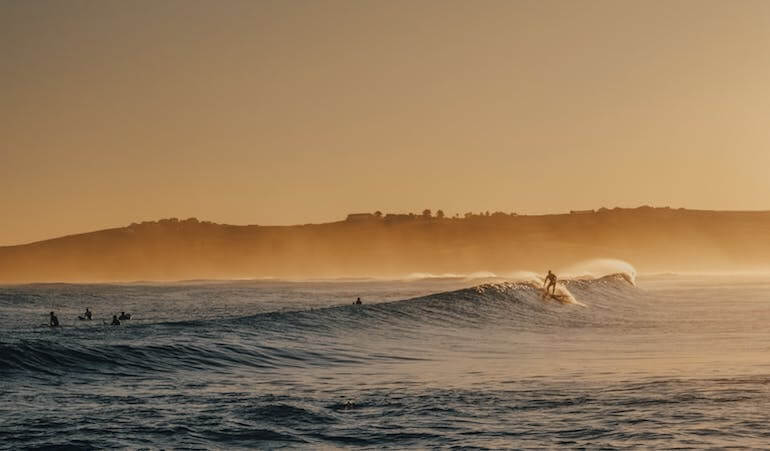
3. Keep on adjusting your position
This is one of the biggest secrets to catching many waves and thus becoming a better surfer. When you are out in the water, keep on analyzing what’s going on.
Don’t just sit at the same place, aimlessly waiting for a wave to come to you.
When you are a surfer, you are a wave hunter. You should hunt down those waves. The clock is ticking. You are trying to impress the judges.
When a big set approach
For example, I’m usually the first to spot a big set, and I start paddling further out, way ahead of everyone else.
If I haven’t caught anything in 10 minutes, I paddle in and catch a couple of smaller waves to keep the momentum going.
When you see a good wave-hungry surfer, notice how they keep adjusting their position to always be at the exact peak at the exact time the wave will break.
There’s a certain magic that comes with knowing waves and the ocean intimately, but you never get to that knowledge if you don’t start activating your brain.
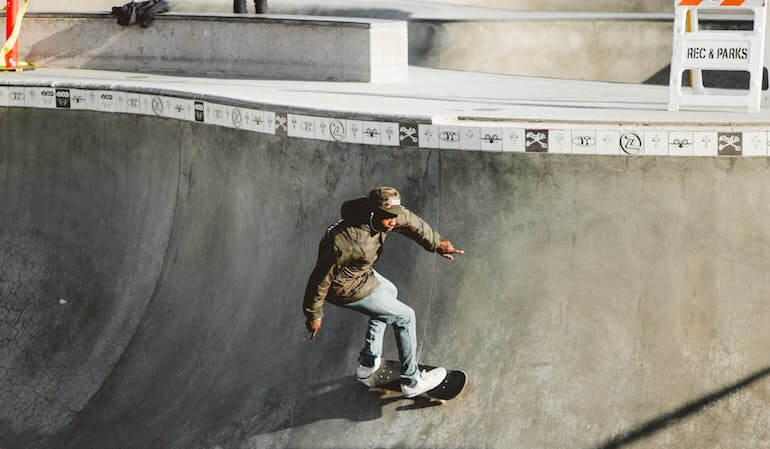
4. Surf skate
At this point, let’s take your surf journey out of the water.
One of the best ways to improve your turns and your ability to compress and decompress your body is to take a few lessons with a surf skate teacher.
Get the opportunity to practice surfing
One of the reasons why surfing is such a difficult sport to learn is because you simply don’t get much time to practice the surf itself.
You have to catch a wave first 😉
Those waves are usually over within seconds.
Welcome the possibility of surfskating. When on the skateboard, you do the same moves as you would do on a surfboard. You practice being on the wave, but on land.
Magical, right? These tips are essential for becoming an intermediate surfer.
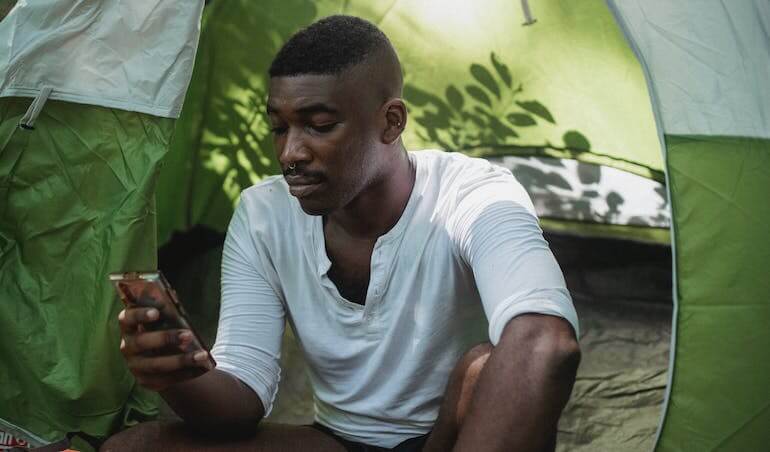
5. Learn how to study the forecast
You have no idea how many people show up at my place ready to rent surfboards without having looked at the forecast beforehand.
At least here in Portugal, the forecast is everything.
Just because you are in a surf paradise doesn’t mean you can surf every day at all times.
Portugal might be extra sensitive to this because we have big tide differences.
Find waves suitable to your level
You can have a more experienced surfer explain how to read the forecast. Also, ask at the rental places.
I always give my guests lots of tips.
Different breaks are good under different conditions. Becoming a good surfer is all about knowing when to go and where to go.
A pro tip is to surf at sunrise and sunset; in many places around the world, the wind is particularly still at those times.
The lesser the wind, the better the surf.
Becoming an intermediate surfer is all about being able to pick optimal conditions for yourself. This is one of the most important -under the radar- tips.
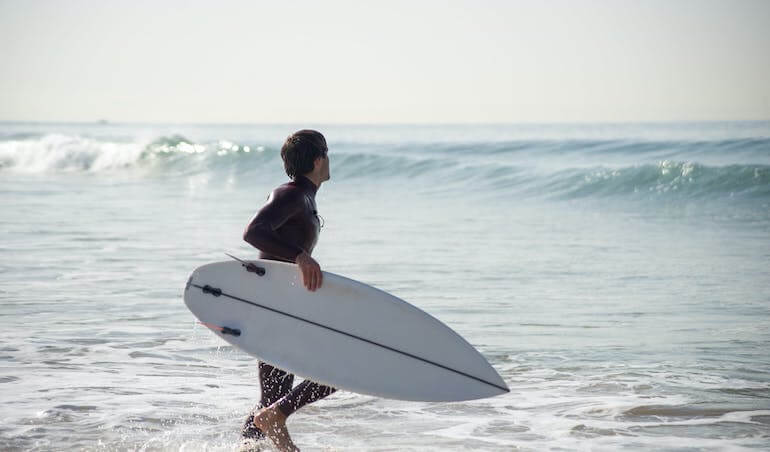
6. Pick a goal for each session
This is how I learned to surf. I decide on goals for myself. I tried to achieve those goals. Learning to surf can be somewhat lonely, out there you are your own teacher.
The goal can be to practice your pop-ups, try to catch ten waves, or try to stay closer to the pocket.
One single goal allows you to have a clear focus.
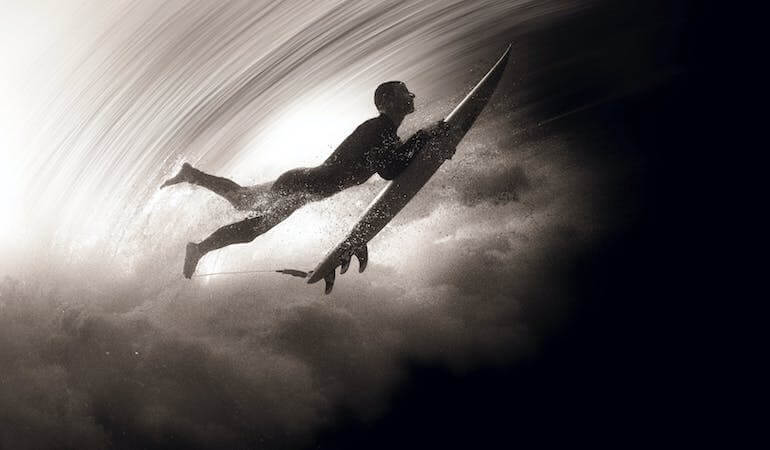
7. Master the duck dive
Many beginners fear the classic duck dive; no need to be. This simple maneuver is gold, pure gold.
Looking at many of our guests, most can’t duck dive, to be honest with you. It is really one of those things that separates a beginner surfer from an intermediate surfer.
You need a smaller board to duck dive, but a 6.6 should be fine. Since I’m so skillful at this move, I think I could duck dive a 7.2.
(It also depends a lot on the strength of the wave.)
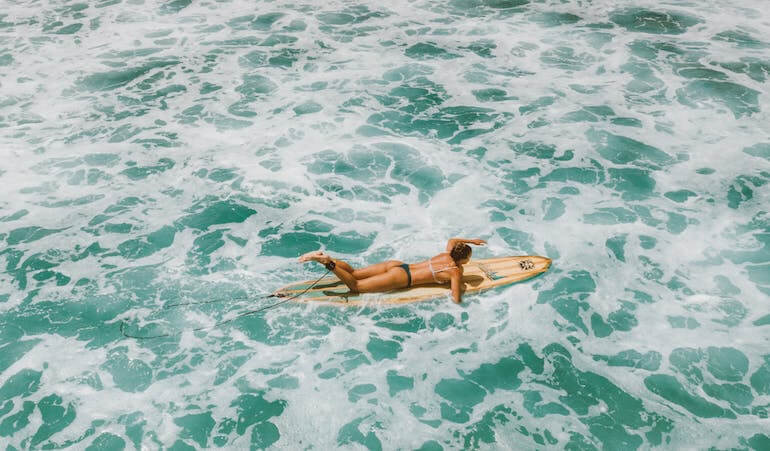
8. Improve your paddling
One of the top 3 most important parts of surfing is paddling. When I see people miss a wave, usually they don’t paddle hard enough.
(The other reason is that they misread the wave; it was simply not a wave worth paddling for.)
Make sure you lay correct on the board, and ask a more experienced surfer to make sure your position is top-notch. If you are wrongly positioned on the boards, it will slow down your paddle momentum.
Make long stroking paddle movements, cusp your palms and raise your chest.
Foremost, paddle like your life depends on it.
Another trick I did when I learned to surf was to count my strikes when I tried to catch a wave.
I felt like I was paddling like crazy for several minutes. In reality, I seldom made more than ten strokes.
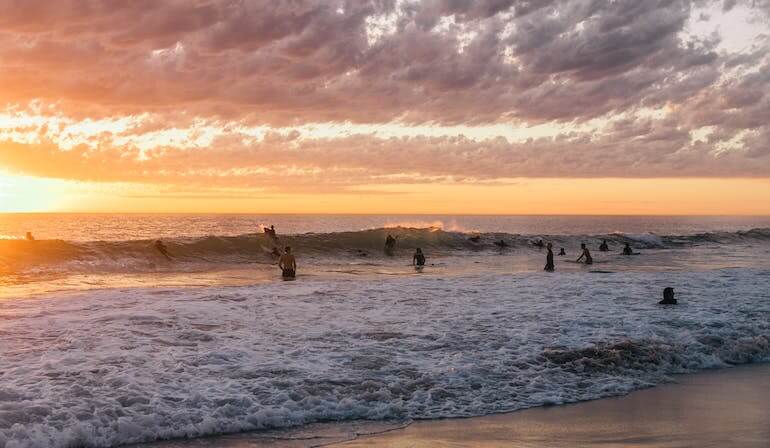
9. Spend time observing other surfers
One of the best ways to improve is to study others. Grab a cup of coffee and have a seat in front of a surf break.
Watch what’s going on?
Ask yourself a couple of questions, such as where the wave is breaking? What are the good surfers doing that differentiates them from the bad surfers?
Try to feel their movements in your body.
Look at more experienced surfers
Study surfers who are much better than you, watch how they paddle, and try to imitate their precise movements during your next session.
How much do they bend their knees, how do they use their arms?
Observing and analyzing are two of my best tips for becoming an intermediate surfer quickly.
Intermediate surfers know how to navigate a break, and so will you do if you pay attention to what’s going on.
Look at inexperienced surfers
People learning to surf is an equally great source of information. I bet you that you can observe many of them just sitting there, waiting for a wave to come and hit them.
You might also see that their paddling is not up to par. Make a list of the most common mistakes you spot, and then work on not making the same mistakes yourself.
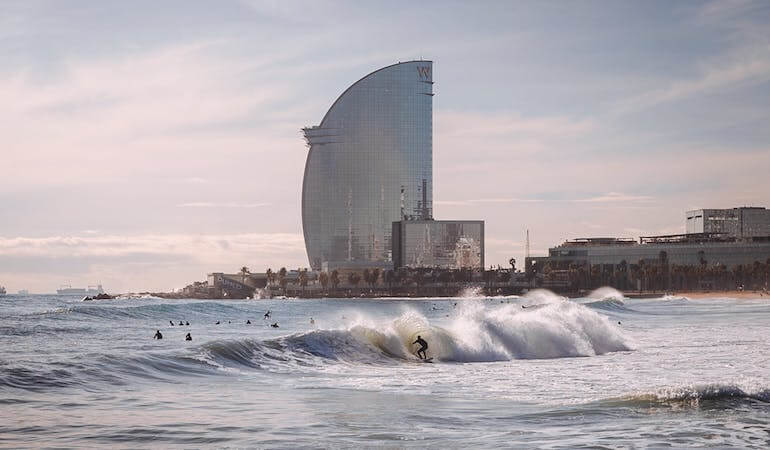
10. Focus on being in the pocket
The difference between catching a green wave and catching the white water is your positioning.
You want to be at the exact place where the wave is just breaking. (Like the surfer in the picture above.)
If the wave is slow, you need to do a cutback; you turn the nose of the board towards the breaking waves (See the picture below) and do a half circle to connect with the power that exists in the pocket.
Watch a couple of YouTube videos before your next surf session.
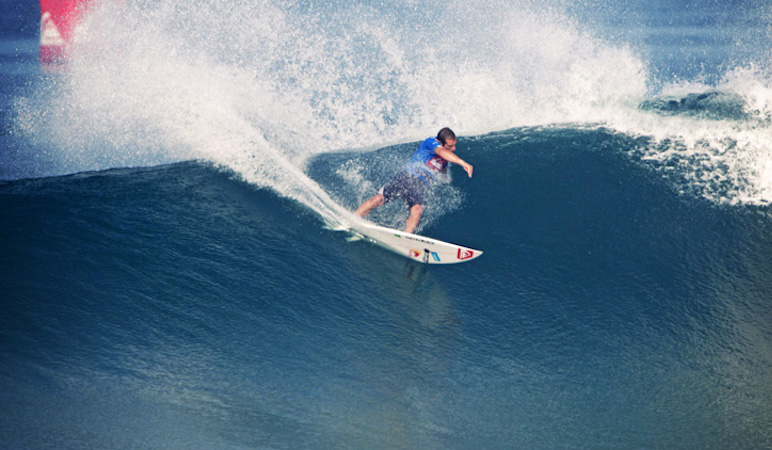
How to handle a wave about to collapse
If the wave is fast, in other words; just about to break on you and on your board, you need to go up to the lip and catch more speed to get past that section.
When people learn how to surf, they have a hard time finding the pocket and staying in the pocket. When you master those two moves, you are officially an intermediate surfer.
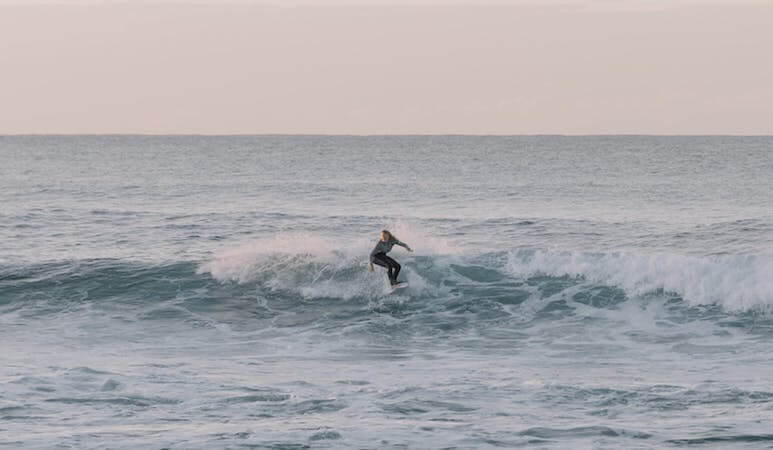
11. Bend your knees
Do you want a quick and easy tip for becoming an intermediate surfer?
Of course, you do.
One of the easiest ways to improve your surf style is to bend your knees. Most beginner surfers stand too straight.
By bending your knees, you lower your center of gravity. You get better balance and turning the board becomes easier.
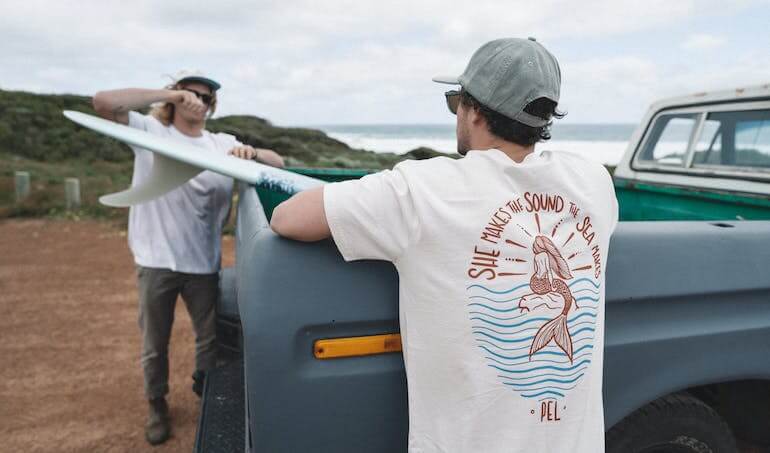
12. Find a surfer friend who is at the same level as you
Sure, you can learn a lot about the technical aspects of surfing. You should study hard. But at the end of the day, surfing is about getting out in the ocean and start hunting for waves.
To not stop being stoked, you need to find your tribe.
You need someone to make sure you get up at 6 in the morning to hit the waves. Someone to do long road trips togheter with when the swell looks promising.
Surfing with friends is so much more fun than surfing alone. People always push each other to perform better; that’s why this tip is essential when you want to be an intermediate surfer.
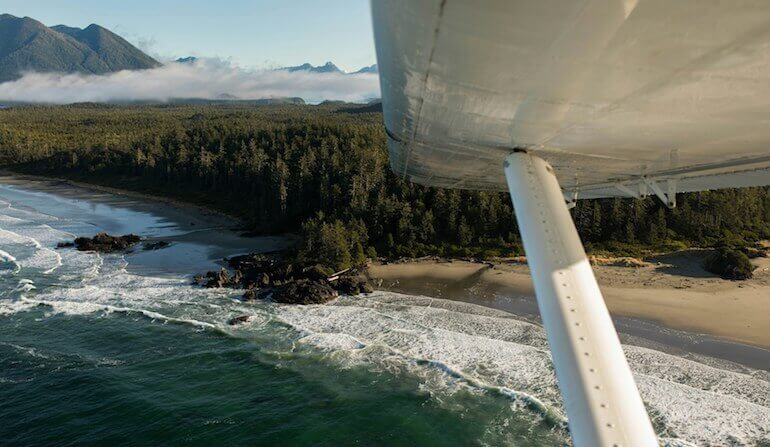
13. Travel to surf
Most people don’t manage to become intermediate surfers because they don’t live close to a surf break. The solution to this problem is to travel to great surf destinations.
Take time away from your normal life and go all in to improve your surfing. Eat, sleep, surf, repeat.
Check out my article about the cheapest surf destinations around the world and book your next ticket.

14. Move somewhere where there is surf
If you are serious about becoming an intermediate surfer, only one tip will help you achieve your goals. Move somewhere where waves are plentiful.
In May 2009, the civil war officially ended in Sri Lanka, the next year, I moved there, and I didn’t leave for two years.
I became a surfer. It was the two best years of my life.
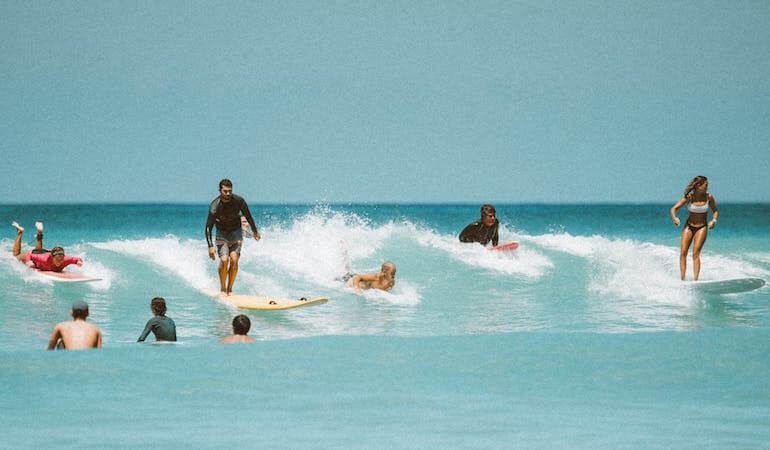
15. Have the correct positioning when you are on your board
When you switch from a soft top to a hard top, you will have to lie more towards the front of the board.
Ask a more experienced surfer to check that your position is correct.
Many beginners stay too far back on the board. They are afraid of the nosedive. But for the wave to get a grip of both you and the board you need to be more towards the front.
A shortboard is more concave than a flat soft top. In surf lingo, shortboards have a bigger rocker, so you are less likely to nosedive.
Surfing is about finding the perfect balance on your board, as you paddle for the next wave.
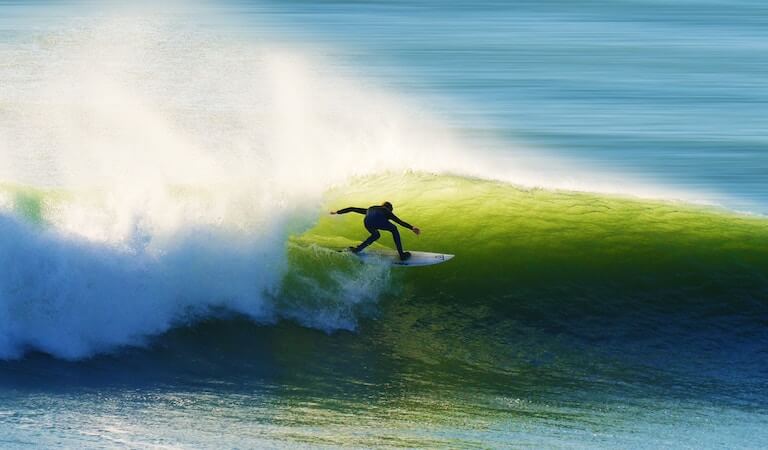
Finale thoughts on surfing tips for becoming an intermediate surfer
To become a surfer, the best thing you can do is to spend time in the water. Surfing looks easy and effortless, but the road to reaching that sense of flow consists of many hours spent practicing.
The more familiar you are with a particular break, the better session you will have.
Mastering surfing is all about practice and dedication.




